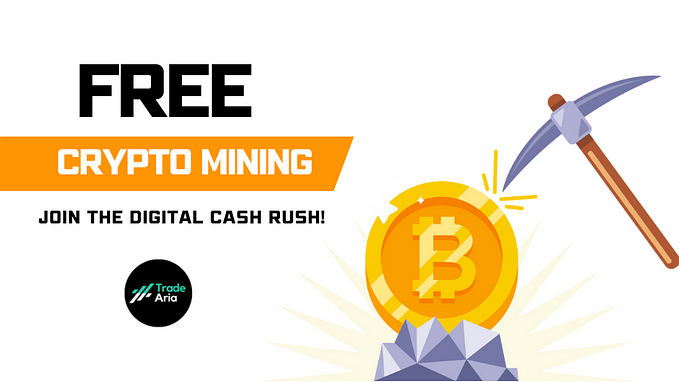Bounce Research: Navigating the Future of Ethereum’s Cryptoeconomic Security through Eigenlayer’s Restaking and Matching Markets

Eigenlayer has emerged as a pioneering force in the realm of restaking, bringing a wave of innovation to Ethereum’s network security while extending its benefits to various applications requiring validator sets. Amidst a landscape teeming with projects exploring diverse applications within restaking networks, Eigenlayer remains steadfast in its commitment to refining the underlying economic framework.
At the core of restaking economics lie two primary objectives: first, enhancing capital efficiency concerning restaking assets and rewards; second, boosting the demand for applications utilizing restaking while bolstering the supply of restaked ETH. Within this project’s scope, we have painstakingly crafted a range of economic frameworks tailored for applications, AVS (Application Value Sets), and ETH suppliers. These frameworks are meticulously designed to achieve our objectives. Applications now gain the flexibility to select from an array of frameworks that align with restaked ETH, while restakers have the opportunity to elevate their yield and liquidity for both their restaked ETH and forthcoming reward tokens.

EigenLayer: Revolutionizing Cryptoeconomic Security
EigenLayer is a protocol built on Ethereum that introduces restaking, a new primitive in cryptoeconomic security. This primitive enables the reuse of ETH on the consensus layer. Users that stake ETH natively or with a liquid staking token (LST) can opt-in to EigenLayer smart contracts to restake their ETH or LST and extend cryptoeconomic security to additional applications on the network to earn additional rewards.
With EigenLayer, Ethereum stakers can help secure many services by restaking their staked ETH and opting-in to many services simultaneously, providing pooled security. Reusing ETH to provide security across many services reduces capital costs for a staker to participate and significantly increases the trust guarantees to individual services. Anyone building a new decentralized service for Ethereum must bootstrap a new trust network to secure their system, fragmenting security. EigenLayer solves this problem by enabling any service, regardless of its composition (e.g. EVM-compatibility), to tap into the pooled security of Ethereum’s stakers, creating an environment for permissionless innovation and free-market governance.
Matching Market: Orchestrating Alignments
A matching market signifies an economic arena where transactions unfold by pairing or “matching” participants based on their preferences or attributes. Within such markets, the objective is to align one group of participants with another in a manner that optimizes overall contentment or usefulness.
For Eigenlayer’s context, applications seeking Ethereum’s security need to align with entities contributing ETH to safeguard the application. To comprehend the incentives driving these alignments, we must scrutinize the motivations of the parties involved:
- Restakers: Maximizing Yield and Confidence
Restakers are the lifeblood of Eigenlayer’s security model. Their primary goal is to maximize their yield while upholding strong confidence in the applications they choose to support. Each restaked ETH serves as a vital piece of this puzzle, as it can exclusively back one application at any given time. To understand the motivations driving restakers, we must look at key factors influencing their decisions:
- Yield: Yield is paramount in the world of restaking. Restakers are keen on optimizing the return on their staked assets. Eigenlayer provides them with a unique opportunity to choose applications that offer competitive yields.
- Confidence: Restakers carefully assess the security and viability of the applications they support. They seek out projects with solid fundamentals, robust development teams, and clear roadmaps. Confidence in the application’s success is a critical driver.
- Duration: The duration of rewards is another consideration for restakers. Some may prefer short-term commitments with the potential for quick rewards, while others may opt for long-term security strategies.
- Risk Tolerance: Restakers have varying levels of risk tolerance. Some are open to more speculative ventures, while others prefer safer, more established applications.
- Restaking Applications: Diverse Motivations, Diverse Matching Mechanisms
Restaking applications come in various flavors, each with its own set of motivations and matching mechanisms. These applications are the recipients of restaked ETH and are responsible for offering rewards to restakers. Let’s explore the intricate motivations driving restaking applications:
- Security vs. Rewards: Conventional restaking applications primarily seek maximum security with minimal rewards cost. They are often risk-averse and engage with restakers who are open to modest reward propositions. These applications prioritize the integrity and stability of their networks.
- Specialized Rewards: Some applications, however, may offer specialized rewards in exchange for specific levels of ETH security. They recognize that different restakers have unique preferences and aim to cater to those who seek specific incentives.
- Dynamic Matching: Eigenlayer’s flexible ecosystem allows restaking applications to dynamically adjust their matching mechanisms. They can fine-tune their offerings to attract restakers who align with their goals, creating a dynamic marketplace of security and rewards.

Strategic Auction Mechanisms: Navigating Ethereum Restaking Initiatives through Fixed-Price, Dutch, and Launchpool-Style Auctions
At Bounce, we are staunch proponents of the auction mechanism as a potent tool for matchmaking, particularly in the context of Eigenlayer’s restaking initiatives. Here we’ll present three of our auction mechanisms, meticulously chosen for their aptitude in facilitating Eigenlayer’s restaking approach.
- Fixed-Price Auction
Diving into the first category, the fixed price auction becomes a focal point. Often identified as a “buy-now” or “fixed-price sale,” this auction type positions the seller in offering items at a steadfast, predetermined price. The divergence from conventional auctions is palpable; instead of participants propelling the final price through a cascade of escalating bids, the seller earmarks a specific price at which buyers can instantly secure the item, evading a competitive bidding process. In the milieu of Eigenlayer restaking, the application delineates the auction’s set value, enabling interested restakers to position their bids on a first-come, first-served paradigm. Here, “price” embodies a specific token count for a designated volume of restaked ETH over a specified duration, crafting a reward-to-compensation ratio. Upon attaining the earmarked ETH volume, the protocol locks in rewards and restaked ETH, subsequently channeling them to the operator to catalyze network launch.
- Dutch Auction (Descending Price Order Book)
Transitioning to the second model, the Dutch auction makes its entrance. This auction variant introduces an item at a peak price, which is then systematically reduced until a bidder consents to the existing price. Distinct from traditional formats, where price elevates amidst competitive bidding, a Dutch auction commences at a lofty asking price, steadily tapering it until a buyer accedes. Within Eigenlayer’s confines, the application aspires to amass the maximal ETH volume, concomitantly mitigating token reward depletion. The journey starts with the application dispensing the pinnacle reward it’s willing to concede per ETH unit. Restakers participate by tabling competitive bids, where a bid signals a restaker’s willingness to accept diminished rewards for their restaked ETH. As the auction winds down, the application satisfies bids, commencing with the least rewarding and ascending, until the designated ETH quota is met.
- Launchpool-Style Auction
Lastly, the Launchpool-style auction takes the stage, where the auctioneer allocates a comprehensive reward pool without confining the Ethereum quantity bid into the pool. All restaked Ethereum within this auction is uniformly distributed among participants as rewards upon the auction’s culmination. This auction variant emerges as particularly efficacious for projects striving to accrue additional ETH to fortify security, which might remain elusive via alternative auctions.
Liquidity Market for Restaked ETH and Rewards
The Matching Market addresses the initial alignment of interests, but Eigenlayer goes a step further. To counterbalance the lack of liquidity during lock-up periods, we are planning to introduce a post-auction liquid market specifically designed for restakers. This inventive solution will seamlessly integrate into our existing Matching Market framework.

Following the conclusion of the auction phase and the initiation of the restaking epoch, restakers will receive synthetic restaked ETH, symbolizing their involvement, along with prospective tokens designed for reward redemption. To facilitate instant liquidity for the restaked ETH and rewards, we will establish dedicated liquidity boxes for each application after the auction.
Unlike typical liquid staking on the Ethereum mainnet, like Lido, for instance, the value of restaked ETH varies based on the chosen restaking application. Each liquidity box remains distinct from others, ensuring separation. Within each liquidity box, restakers can engage in over-the-counter (OTC) or order book market transactions to buy and sell future tokens.
Mainnet and Initial Launch
The initial launch of EigenLayer is catered towards stakers who want to restake on EigenLayer. The launch is limited to restaking and withdrawing restaked assets and does not feature opting in to services or delegation of restaked assets within EigenLayer.
The significant components available now are:
- EigenPod: A contract that is deployed on a per-user basis that facilitates native restaking.
- DelayedWithdrawalRouter: When a staker participating in native restaking via an EigenPod wants to withdraw from participating in both Ethereum and EigenLayer, this contract serves as an escrow for their withdrawn ETH for 7 days.
- StrategyManager: A contract that facilitates liquid restaking.
These components enable the following features:
- Ethereum holders who wish to start staking on Ethereum and natively restake on EigenLayer can set their validator withdrawal credentials to their EigenPod in the process of depositing their stake on Ethereum.
- Existing Ethereum stakers with a 0x00 withdrawal prefix can natively restake on EigenLayer by setting their withdrawal credential to their EigenPod.
- LST holders of stETH, rETH, or cbETH can participate in liquid restaking on EigenLayer.
- For LSTs and EigenPods, queued withdrawals have a 7-day hold before they are available to withdraw.
Future Upgrades
After this initial launch, the next protocol upgrade will enable operators to register with EigenLayer and enable restakers to delegate to those operators. Subsequently, the protocol will be upgraded to enable on-chain contracts of service modules to interact with EigenLayer, enabling operators and restakers to opt-in to validating for those service modules.
Conclusion
Eigenlayer’s innovative approach to restaking is poised to reshape Ethereum’s security landscape. By fostering alignment between restakers and restaking applications in a flexible Matching Market and providing liquidity solutions through a dedicated market, Eigenlayer offers a comprehensive ecosystem for maximizing security and rewards. As Eigenlayer advances into its mainnet launch and future upgrades, it opens the door to a new era of crypto economic security and permissionless innovation within the Ethereum network.
About Bounce Finance
Bounce Finance is a decentralized platform dedicated to meeting the evolving needs of the Web3 space. Established in 2020, Bounce Finance is proudly known for outstanding user experience and seamless integration of blockchain technology in trading both digital and tangible assets. We provide a decentralized auction protocol that empowers users to create and participate in diverse types of auctions on multiple blockchain networks. With a focus on Auction as a Service, Bounce Finance offers a wide range of products, including Token & NFT Auctions, Real-World Collectible Auctions, Ad Space Auctions, and SDK. Bounce Finance also provides Private Launchpad services, an on-chain solution designed to streamline IDOs for new projects.
Keep up to date on all the latest from Bounce Finance👇
Website | App | Docs | Telegram Announcement | Telegram Community | Twitter | Medium | YouTube | Discord | Zealy | LinkeIn










